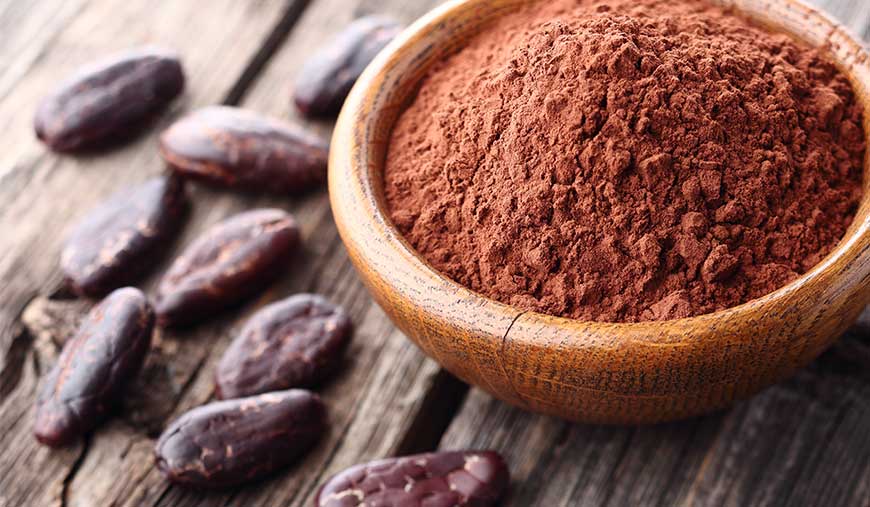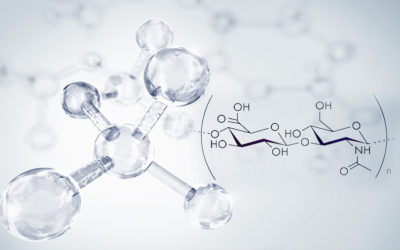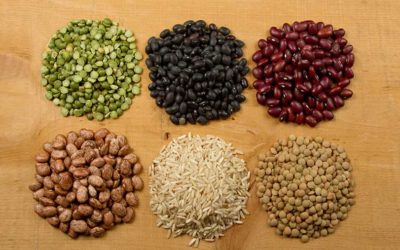Cocoa polyphenols are natural substances present in the cocoa powder obtained by the working of the Theobroma Cacao tree. Cocoa polyphenols are compounds known since ancient times for their properties, indeed cocoa plant has a very ancient history dated back to Maya and Aztecs that used it for therapeutic purposes. Cocoa is the food with a higher content of polyphenols and, among these, epicatechin is present in a higher percentage and showed greater activity.
There are few epidemiologic studies developed during the years that investigated the properties of polyphenols, among these there is a study conducted on Kuna Indians, in San Blas Island of Arcipelago of Panama, that shows how the population has a low risk of death for cardiovascular disease. Such a population used to drink great quantities of cocoa drinks thanks to the high quantity of cocoa plants growing in the region.
This study underlined the beneficial effects that cocoa consumption may have on health. Furthermore, there are scientific studies that showed that Cocoa polyphenols contained in cocoa have various properties: Theobroma Cacao contributes to a tonic action and support of metabolism, as well as an antioxidant action, contributing to protecting cells from free radicals. Thanks to their characteristics, Cocoa polyphenols can have a role in the treatment of different problems where a constant consumption of them may be a help to improve and maintain cardiovascular, metabolic, and cerebrovascular health.
COGNITIVE FUNCTIONS
The functioning of the nervous system depends on its continuous supply of glucose and oxygen that allows the brain to produce fundamental energy to ensure its correct functioning. Indeed blood flow ensures that nutritional elements, including glucose, reach their target cells. Once in the cell, glucose is transformed and then used in the normal power plant of our body: mitochondria. Very low blood pressure and blood sugar level may lead to nervous system complications and consequent ictus, dementia, Alzheimer’s disease, or concentration difficulties. The concurrence of all biochemical transformations and energetic exchanges carried out at the neurological level is called cerebral metabolism. The alteration of one or more processes linked to these mechanisms is the key to the development of cognitive decline and neurodegenerative disorders.
Scientific studies report that assumption of cocoa polyphenols may help as an adjuvant to reactivate processes involved in cerebral metabolism. Daily consumption of cocoa polyphenols helps to maintain an appropriate blood flow, improving cerebral perfusion. Indeed these compounds act at the endothelial level boosting the release and synthesis of nitric oxide, this substance regulates vasodilatation, ensuring an improved vascular function. Further investigations showed that among the various characteristics of polyphenols there is the ability to improve insulin sensitivity (a hormone that regulates glucose entrance in the cell); modulate neuroinflammation and to have neuroprotective activity able to preserve and maintain cognitive ability linked to memory, language ability and orientation. Polyphenols act a brain level in different ways that deserve further investigations to be deeply discovered, but in addition, to have a beneficial effect on vascular flow and formation of new blood vessels, clinical studies showed that these compounds are able o intervene in the cascade of chemical reaction that leads to impair neuronal death caused by neurotoxins, boosting their survival. In conclusion, daily supplementation of cocoa polyphenols contributes to maintaining endothelium-dependent vasodilation, boosting the normal flow of nutritional substances to the brain, maintaining a protective effect on brain tissue in cases of needed support of these substances, such as physiological and/or early decline linked to aging, and in case of support of general mind effectiveness.
MENOPAUSE
Menopause is a physiological phase of life in which there is the termination of ovary function, i.e. the termination of the menstrual cycle and reproductive age. Generally, menopause occurs in women around 50 years old and can be identified when the menstrual cycle is absent for at least one year.
Lack of oestrogens causes a series of changings in the female body connected with trophic, metabolic, sexual and psychological aspects, leading to a series of symptoms, which varies from individual to individual. There are some changings in the neuroendocrine system causing discomforts like hot flashes, night sweats, insomnia and mood alteration. 70-75% of women experience these discomforts within 2 years from the beginning of menopause phase, within the first 5 years from the beginning of menopause phase there are modifications of the genitourinary system such as vaginal dryness or atrophy, dyspareunia, frequent cystitis and there are some long-term effects such as the increased risk of cardiovascular diseases, osteoporosis, osteopenia, and metabolic syndrome. Scientific evidence shows how women are more exposed to the risk of ictus, heart attack, hypertension, a broken femur, and diabetes because of the lack of the protective role of oestrogens. For these reasons in this stage of the life prevention and treatment of the problems related to menopause is a key factor for maintaining a healthy life and for limiting discomfort avoiding at the same time the development of serious diseases, more difficult to treat.
Different scientific studies report that cocoa polyphenols can play a role to impair long and short term changings due to lower oestrogens levels in menopausal women.Indeed clinical studies underline that consumption of cocoa polyphenols present in cocoa is strictly linked to a reduction of the risk of cardiovascular diseases, to an improved blood flow and to a beneficial effect on blood pressure.
Cocoa polyphenols contribute to the increase of the endothelial function thanks to their ability to act on nitric oxide synthesis and production, that is fundamental in the vasodilatation leading to better arterial blood pressure, better levels of cholesterol and blood glucose, especially in elder women. A recent study conducted on women between 50 and 60 years old administered with cocoa polyphenols, Myo-inositol and soy isoflavones, confirms how daily use of these compounds boosts the improvement of the blood sugar level, blood lipid level, bone resorption as well as thanks to the presence of phytoestrogens climacteric symptoms are treated. Supplementation of cocoa polyphenols together with the maintenance of a healthy and balanced lifestyle can be an effective and safe support to deal with all the discomfort related to perimenopause stages.
BIBLIOGRAPHY
Hollenberg N.K. et al. J Cardiovasc Pharmacol 2006;47.
Corti R. et al. Circulation 2009;119:1433-1441.
Hollenberg N. K. et al. Circulation 2007;116:2360-2362.
Grassi D. et al. Hypertension 2005;46(2):398-405.
Grassi D. et al. Am J Clin Nutr 2005;81:611-4.
Letenneur L. et al. Am J Epidemiol 2007;165(12):1364-71.
Nehlig A. Br J Clin Pharmacol 2012;75(3):716-727.
Desideri G. et al. Hypertension 2012;60:794-801.
Wang J. et al. J Alzheimers Dis 2014;41:643–650.
Osakabe N. J Clin Biochem Nutr 2013;52(3):186–192.
Grassi D. et al. Arch Biochem Biophys 2010;501:112-115.
D’Anna R. et al. Int J Endocrinol 2014;1-7.
Tangney C. et al. Curr Atheroscler Rep 2013;15(5):324.
Khan N. et al. Nutrients 2014;6:844-880.
Insights
Hyaluronic acid
The hyaluronic acid is a glycosaminoglycan (GAG) consisting of the repetition of disaccharide units of d-glucuronic acid and N-acetyl-D-glucosamine. It represents the main component of the...
Inositol
Inositol is a 6 carbon atoms cyclic polyalcohol. It was isolated for the first time from animal muscle by J.J. Scherer in 1850. Inositol is found in many foods, particularly in cereals, nuts,...
Melatonin and female fertility
What is Melatonin Melatonin or N-acetyl-5-methoxytryptamine is a naturallipophilic substance produced and secreted in our body mainly by the pineal gland (epiphysis). This gland is situated below...




